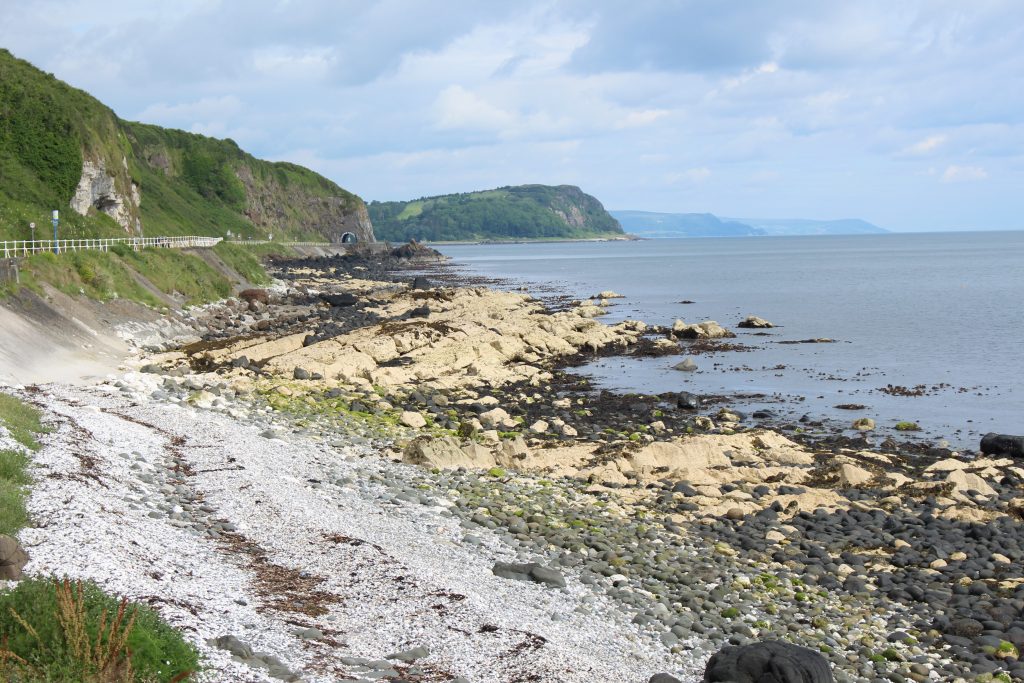
First of all, I salute you! Hopefully using the fabulous advice on this blog, you’ve got your licence, bought a bike, and are raring to get going with your new life on two wheels.
So now what? Well, during the week, if you’re one of the folks who helped UK bike sales soar by 26% at one point last year and scooter sales soar even more by 49%, you’ll have found that you arrive at work with a smile rather than wanting to beat your boss to death with a paperweight.
That’s if offices have paperweights these days.
Now, I suspect that some of the buyers behind those Coronacrisis statistics were existing bikers who thought: Stuff it, life’s too short, I’m going to get that machine I’ve always dreamed of.
But I’m guessing a lot of the newbie scooterists were commuters who wanted to avoid public transport – only to discover that getting to work was now faster and more fun than standing in a crowded bus or train like a giant sardine.
However, the real fun of biking is when you wake up on a Saturday morning, fling back the curtains to reveal glorious sunshine and realise that the road is calling you, and resistance is futile. As those well-known Swedish tennis players in Star Trek the Borg were always saying.
So here’s my handy guide to where to head for a weekend blast, either with your mates on your own.
The Antrim Coast Road
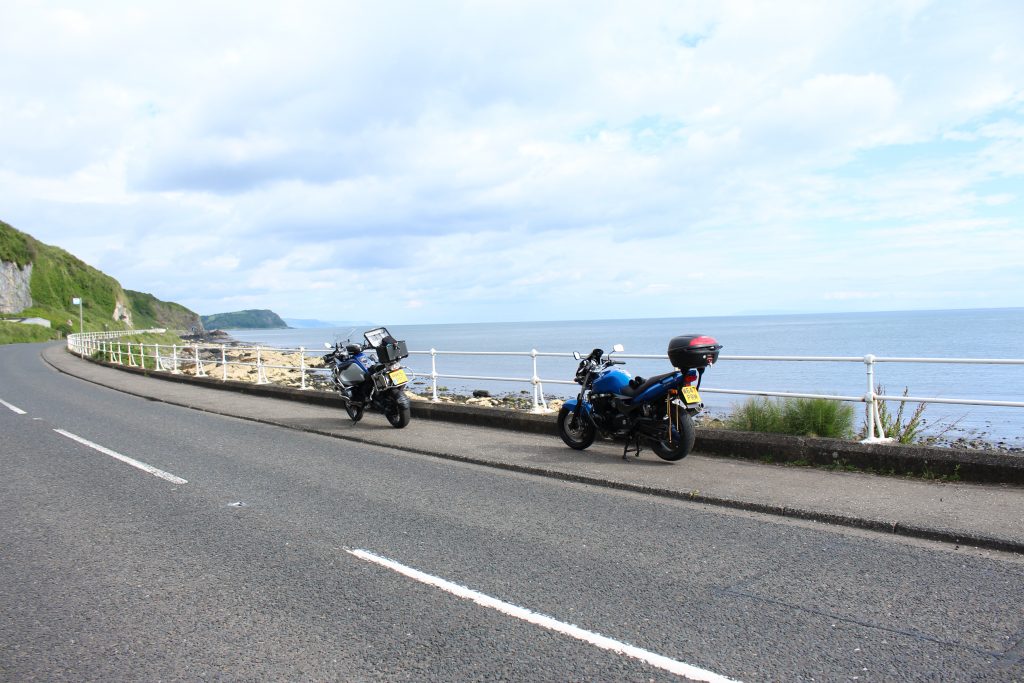
This is one of the world’s great rides. I’ve lost count of the number of times I’ve ridden or driven it, and I love taking visitors on it to bathe in their delight.
Starting in Belfast, you can take the fast inland A8 to Larne, or the more coastal A2 through Carrickfergus for a look around the imposing 12th Century Norman castle.
At Glenarm, the impressive castle is open rarely, although to be honest, in 1929 the interior was badly damaged by a fire started by the housekeeper keeping a fire constantly going in her bedroom to warm a featherless parrot, but the walled gardens are stunning and the seaside car park is a popular gathering spot for bikers.
In the summer there are usually burger and ice cream vans there for some snacks. In Carnlough, The Londonderry Arms Hotel was once owned by Churchill. If you’re here at lunchtime, this is a great spot for some excellent nosh in front of an open fire. My favourite there is the salmon with creamy mashed potato. Yum.
In Cushendall, take a left at the Curfew Tower built by landlord of the town Francis Turnley in 1817, to confine riotous prisoners.
The gaoler, Army pensioner Dan McBride, was armed with a musket, a bayonet, a brace of pistols and a 13ft pike. The tower’s now owned by artist Bill Drummond.
Cushendun, the next stop, is a Cornish-style village designed by Clough Williams-Ellis, whose Portmeirion in Wales was the setting for the cult Sixties TV series The Prisoner.
Half a mile out of there, turn right for Torr Head, then after 10.5 miles turn right on the Murlough Road for stunning Murlough Bay, where British diplomat Sir Roger Casement begged in vain to be buried after he was hanged for treason in 1916 for negotiating German support for the Easter Rising.
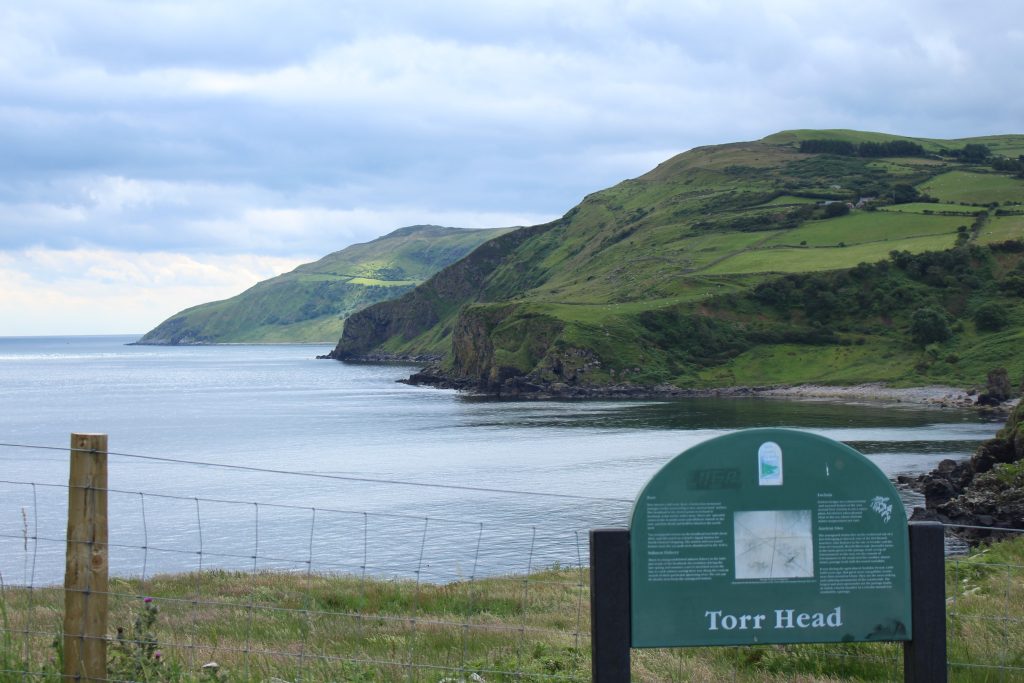
As you trundle around the upsy-downsy B-road of the Torr Head loop, you’ll feel like a motorised hobbit out for a bimble in Middle Earth.
At Torr Head itself, the large grey ruined building beside the road was a 19th Century customs house, and the abandoned one up the hill a semaphore signalling station that relayed shipping information to Lloyds of London and was one of the first places to have Marconi’s newfangled wireless telegraphy system installed.
When you reach Ballycastle, you’ll probably find loads of bikers enjoying ice cream from Maud’s, or dulce from one of the seafront shops, but if you haven’t eaten yet, further along the coast in Ballintoy, The Fullerton Arms, a 19th Century coaching inn, has parking around the back, superb food, and overlooks the sea and the picture-perfect little harbour which after a rugged makeover became the Iron Islands in Game of Thrones.
At Carrick-a-Rede, if you’ve plucked up the courage to walk over the swaying rope bridge 80ft above the sea to the little island, the bad news is you have to walk back again.
After visiting the world’s oldest distillery in Bushmills or enjoying splendid nosh at The Bushmills Inn, marvel at the clifftop ruins of Dunluce Castle, where the kitchens plunged into the sea in 1639, taking seven cooks with them.
And then marvel even more at The Giant’s Causeway.
The fairy story goes that its 37,000 basalt columns, mostly hexagonal and some up to 39ft tall, are the result of a huge subterranean explosion 60 million years ago, but locals know the cold scientific truth – that they’re the remnants of a causeway built by a Scottish giant so he could come over and fight local giant Finn McCool.
Although the causeway stones and coastal path are free, the car park and access to the visitor centre is a disturbing £13 per person.
My advice is to park free outside the adjacent Causeway Hotel and spend the money on a bowl of scrumptious soup.
From there, you can take the fast A37 and A2 from Coleraine to Derry, or a more leisurely route past the ruined 18th Century mansion of Downhill House and the clifftop Roman folly of Mussendun Temple, built by the madly eccentric Bishop of Derry Frederick Augustus Hervey, who allegedly chose his curates by feeding them 10-course lunches then making them race naked along the beach below.
If you’ve time, take in the North West 200 circuit, the triangular nine-mile course between Portrush, Coleraine and Portstewart which in May attracts up to 200,000 spectators for the famous road race, although in 2020 and 2021, it was cancelled by the Coronacrisis.
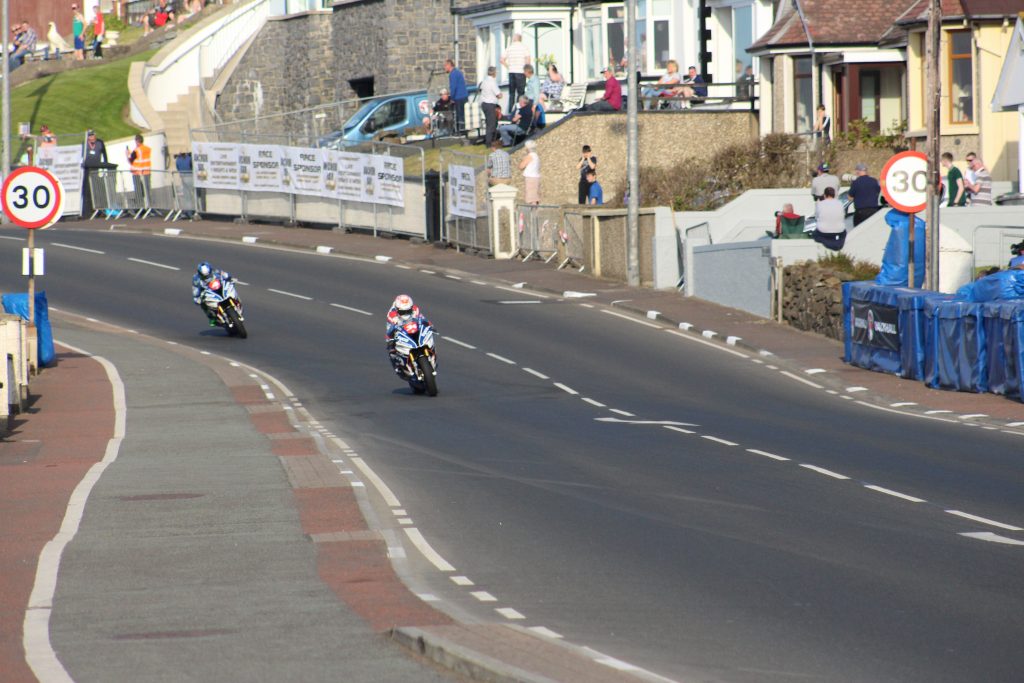
It’ll take you 20 minutes at legal speeds. At up to 200mph, the world’s top road racers do it in four and a bit.
Or take a side trip to Ballymoney and pay homage to NW200 and TT hero Joey Dunlop at Joey’s Bar, which he owned.
Above the bar is the Honda on which he won his last race in Estonia before crashing and dying in the next one, and behind it, his son Gary is usually pulling pints.
There’s a bronze statue of the local hero in a memorial garden 100 yards away, and a Ducati and Suzuki dealership, Millsport, run by the affable Billy Lyons, across the street.
The general website for the Antrim Coast Road is www.visitcausewaycoastandglens.com.
A ferry story with a happy ending
One of my favourite runs with biking buddies from Belfast is over the Craigantlet Hills to Newtownards, then down to Portaferry for ice cream or hot chocolate, depending on the temperature, from Blaney’s, which has been in the same family since 1901.
When you arrive at the seafront, it’s about 20m on your left, so park the bike, grab ice cream, a hot drink or some mint imperials from the array of traditional confectionery jars behind the counter, then make your way across the road to the benches there to sit, relax, tuck in and watch the Strangford ferry come and go.
If you’re in need of something more substantial, The Portaferry Hotel is a great spot for lunch. I recommend the chowder if it’s on.
Then jump on board the ferry, coughing up £3.50 per bike and rider – although bear in mind that it’s card only, no cash – then after the epic 10-minute journey, ride off at Strangford, where The Cuan is another great spot for lunch.
From there, it’s a lovely winding run down to Ardglass and through the gorgeous Georgian village of Killough, whose sycamore-lined main street will make you think you’ve accidentally landed in France.
There’s usually a little van selling noodles and coffee there at weekends, and Rex McCandless, who invented the famous Norton featherbed frame, renovated and lived in the village’s former railway station.
After that, it’s a glorious run along the coast to meet up with the main road back to Belfast, and home for tea and medals.
To the mountains, by Jove!
On any given Sunday, every biker in Northern Ireland will either be heading up the Antrim Coast Road or sitting in the sun in Newcastle soaking up the sun and shooting the breeze with other bikers.
The ride to Newcastle isn’t as attractive as the road up the north coast, but once you’re there, it’s a good starting point for heading up the Mournes to Spelga Dam, at 1,200ft the highest road in Northern Ireland.
From Newcastle, ride south on the A2 coast road, and after seven miles turn right on the Quarter Road just before Annalong and follow the signs for Silent Valley and Spelga Dam.
Most visitors to Ireland think that the water supply falls out of the sky, but we have to collect it somewhere in case the Guinness runs out, and in 1894 the burghers of Belfast had the idea of building Spelga Dam to supply the capital with water.
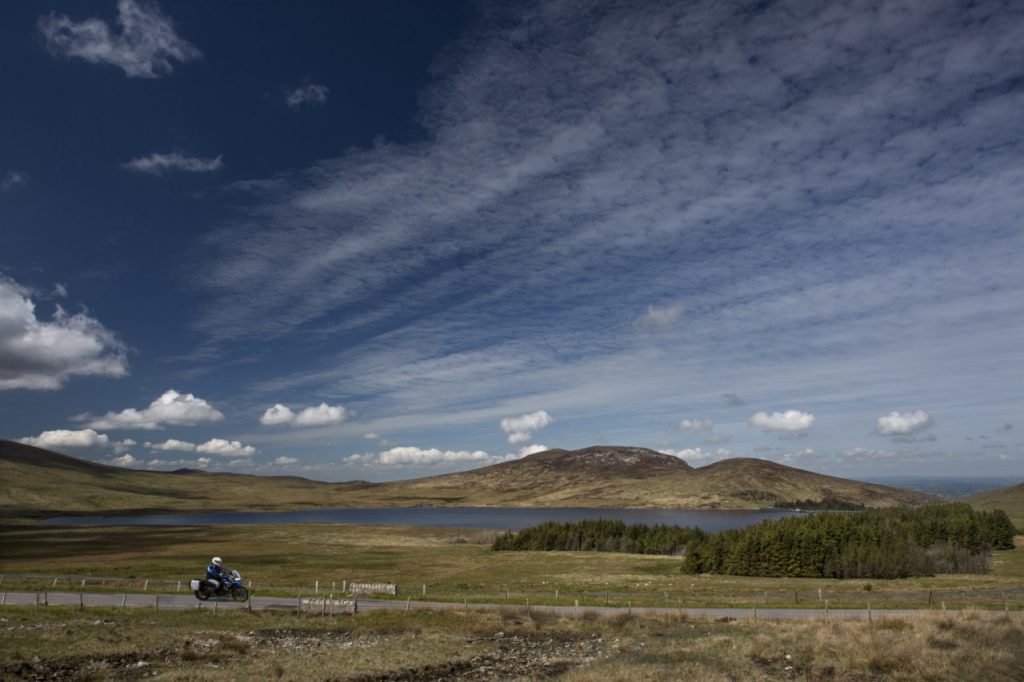
Builders being what they are, it was finally started in 1953, and today the result is a serene and lonely lake which is home to wild trout.
If you’re feeling peckish, stay on the coast road to Annalong, where The Galley does some of the best fish and chips in Northern Ireland.
If you do, then just double back a couple of miles to the Quarter Road and turn inland as suggested.
After that you’re on an upsy-downsy B-road past little white cottages with signs outside offering the giddy delights of duck eggs for sale, and sheep grazing in pocket handkerchief fields bounded by dry stone walls, then past the Silent Valley, another reservoir which is a lovely spot for a picnic.
You can either take the way I’ve suggested inland, or for more sweeping and faster A-roads through the mountains from the coast road, if you’re coming from Belfast, just past Dundrum follow the signs for Bryansford, with a potential two-mile side trip to Castlewellan, which has excellent gardens and a maze.
Either way, when you get to the dam and the lake formed by it, downhill from the main road you’ll see the old road which ran through the now drowned valley, spookily ending at the water’s edge.
And behind the dam you’ll find the Magic Hill, where a bike or car left in neutral will appear to run uphill.
Scientists will tell you that this is an optical illusion caused by the lie of the land, but locals know the truth. It’s the fairies.
Either way, it’s a great way to save fuel.
After you leave, you can then take one of the roads back to the coast or continue on to Hilltown and Newry down a well-surfaced road with nice twisties.

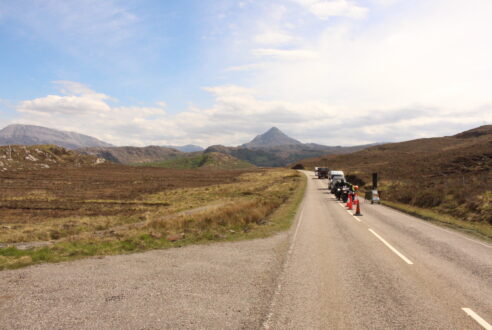

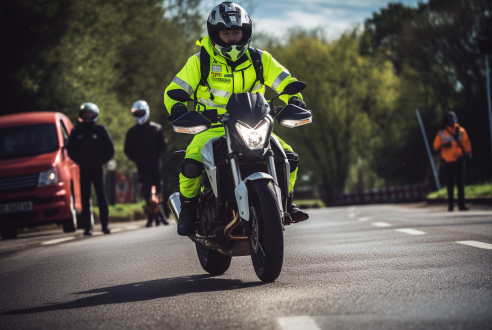
Great read tons of stuff I didn’t know, still I’ve only lived here 56 years 😳, cheers.
Excellent
Thank you for sharing